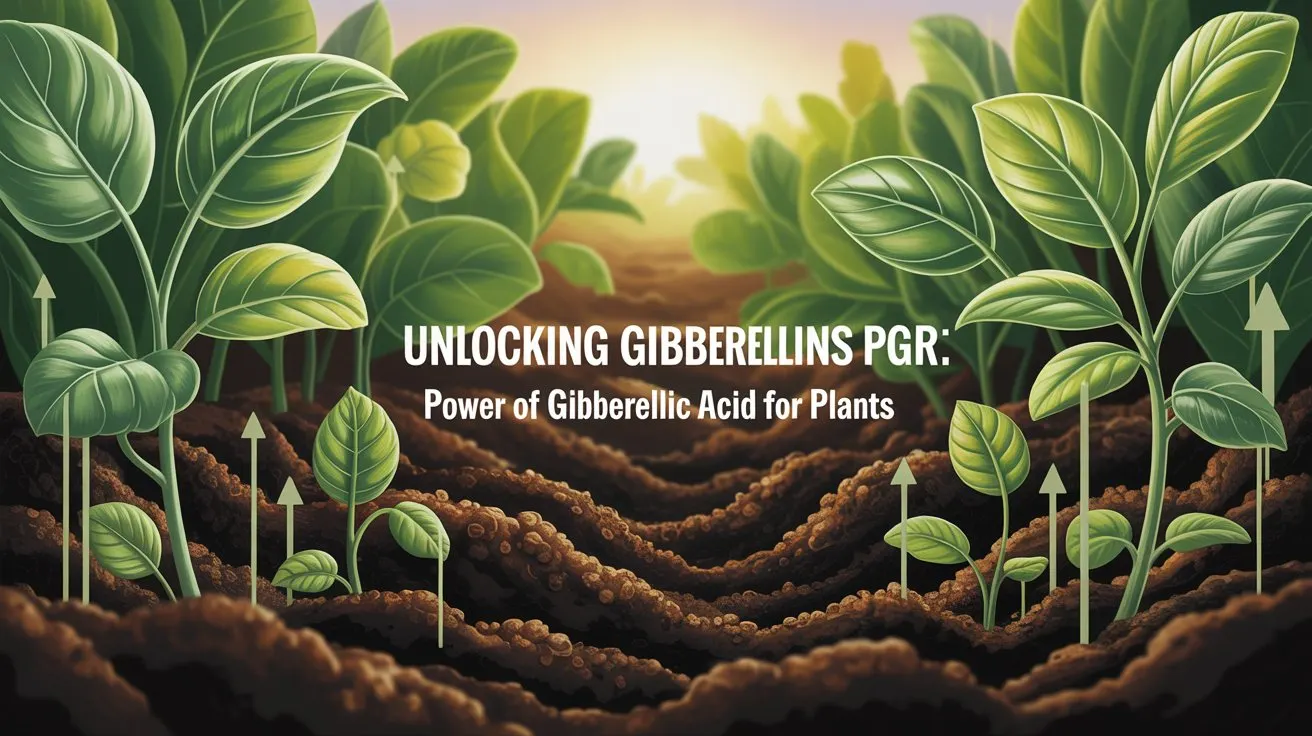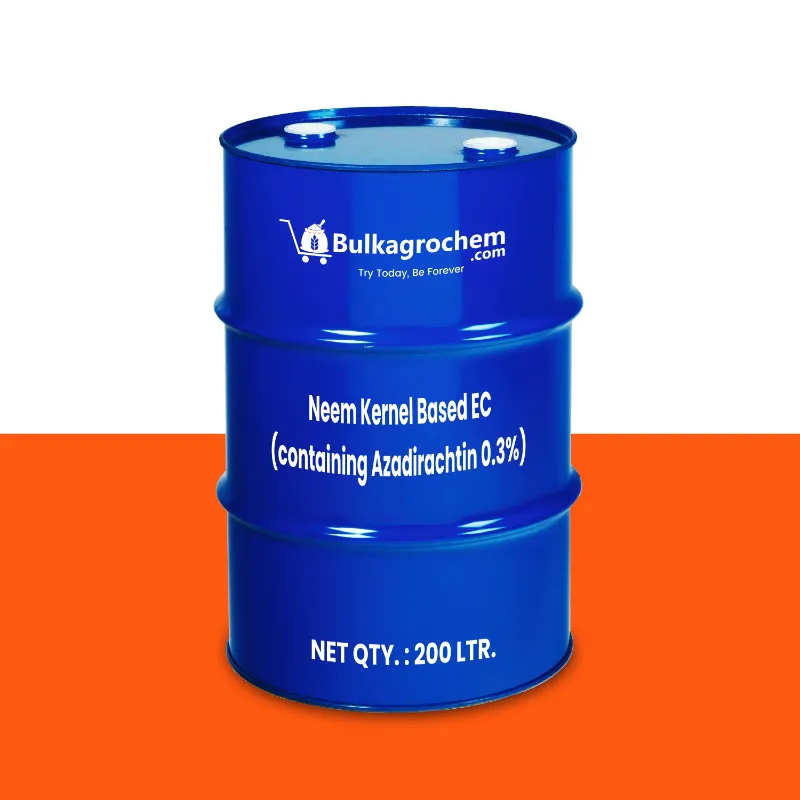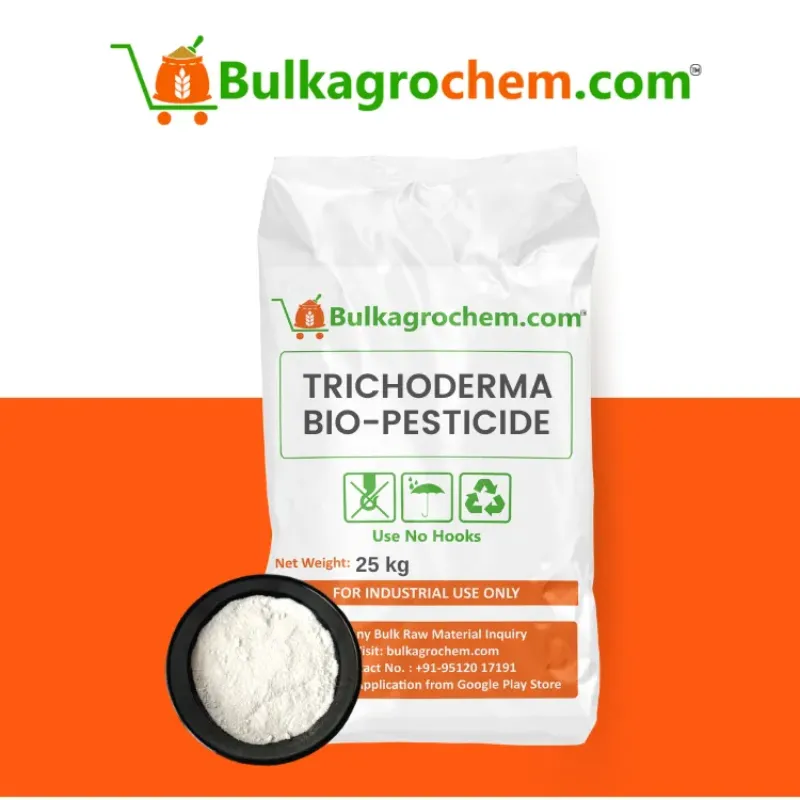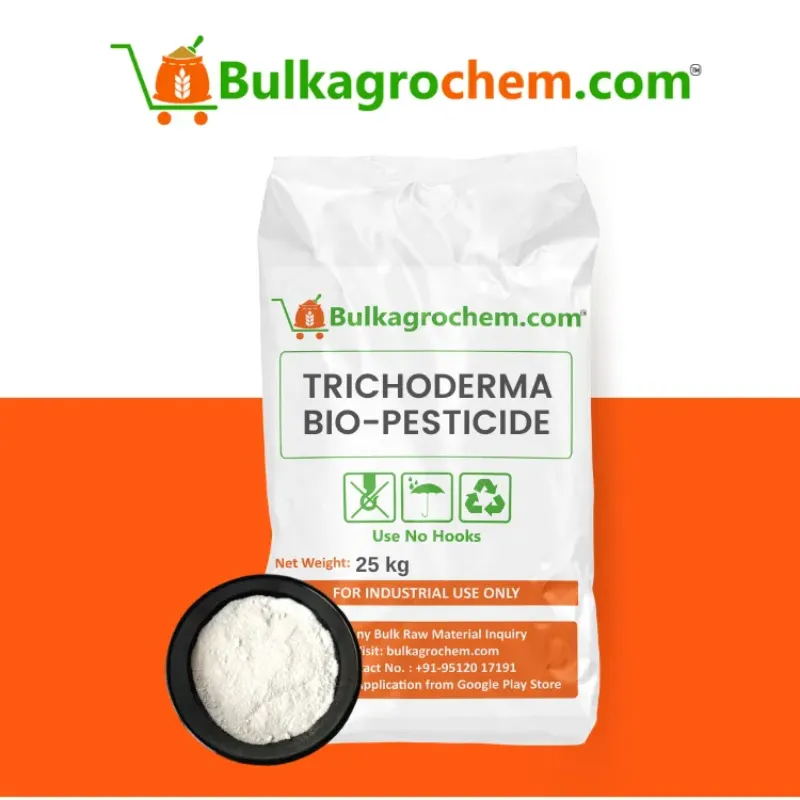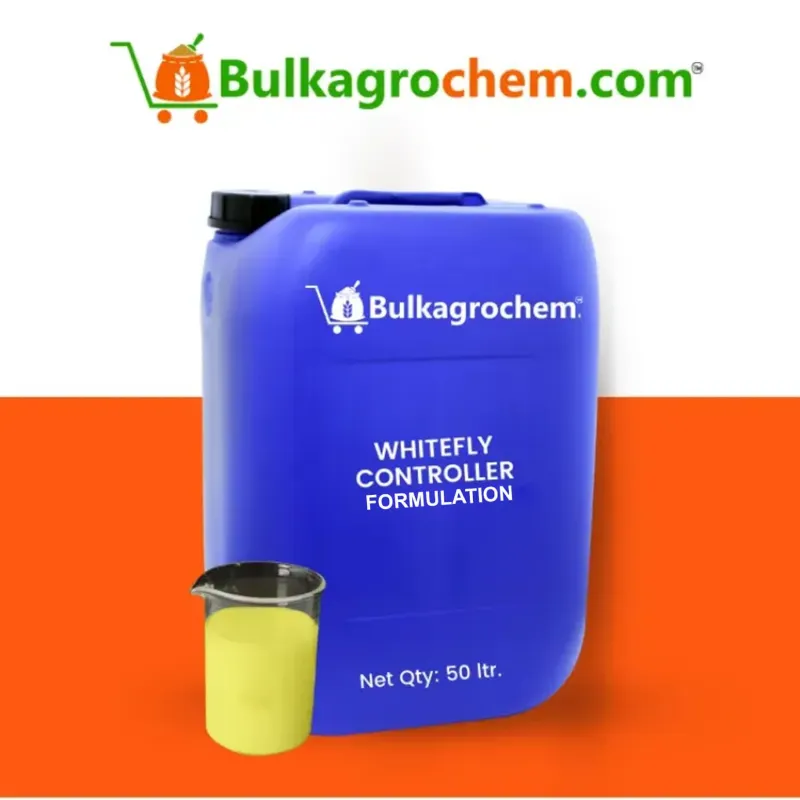Gibberellins are a class of plant growth regulators that are essential for regulating the timing of flowering, seed germination, and stem elongation. These compounds, when combined as a gibberellic acid PGR, provide growers with precise control over developmental transitions, turning slow-growing seedlings into resilient, high-yielding crops.
Gibberellic acid for plants, when applied at micro-dose levels, binds to DELLA proteins in the nucleus, starting a cascade that releases genes that promote cell growth. This hormone signal synchronises flower induction, breaks dormancy in obstinate seeds, and speeds up internode elongation—all vital processes that are impossible to accomplish with conventional fertilisers alone.
A dual-action treatment is produced when gibberellic acid PGR is incorporated into your nutrient program. The gibberellin component precisely targets the macronutrients that the pgr fertilizer supplies. By precisely determining "when to apply PGR"—for instance, a foliar GA₃ spray right before bolting—growers are able to consistently produce stronger, taller plants with uniform fruit set and a lower chance of lodging.
Introduction: Understanding Gibberellins and Their Role
Gibberellins are an essential class of plant growth regulators that coordinate key developmental stages, such as stem elongation, flowering, and seed germination. Being naturally occurring signalling molecules, they open up genetic pathways that promote fast cell division and growth, providing crops with the height, vitality, and reproductive synchronisation required for uniform harvests and high-density plantings.
Important Points:
- Gibberellins work systemically, entering developing tissues through the xylem and phloem.
- Farmers can overcome seed dormancy and promote robust early growth by using them as gibberellic acid PGR.
- Optimising gibberellic acid for plant treatments for maximum consistency and yield requires an understanding of gibberellin pathways.
Defining Gibberellins as Key Plant Growth Regulators
Along with auxins, cytokinins, and abscisic acid, gibberellins are naturally occurring diterpenoid acids found in plants and are considered to be one of the primary hormonal groups. Gibberellic acid for plants was the moniker given to them when they were discovered to be catalysts of stem elongation and incorporated into PGR products. Growers can precisely adjust vegetative and reproductive behaviours to fit crop type and production objectives by externally adjusting gibberellin levels.
Important Points:
- There are more than 100 natural gibberellin analogues, with GA₃ being the most commonly utilised in farming.
- GA₃, a gibberellic acid PGR, breaks seed dormancy and encourages internode extension by avoiding genetic bottlenecks.
- Gibberellin-family growth regulators are used at concentrations of microgrammes per litre to achieve specific results.
Why Gibberellic Acid PGR Is Critical for Modern Farming
Timing and uniformity are critical in controlled-environment agriculture and high-density cultivation. PGR for gibberellic acid permits:
- Uniform Germination: GA₃ treatment of seeds guarantees uniform stand establishment, minimising gaps and competition.
- Controlled Height: By timing stem elongation to ideal conditions, selective GA sprays can reduce lodging in cereals.
Gibberellin applications for ornamentals and fruits synchronise bloom windows, making harvesting easier and enhancing quality.
Modern farmers can increase productivity and profitability by incorporating gibberellic acid into nutrient programs, which transform unpredictable field responses into predictable results.
How Gibberellins Differ from Other Plant Hormones
Gibberellins focus on growth and developmental transitions, but all plant hormones affect growth. In contrast to cytokinins, which promote cell division, or auxins, which concentrate on root initiation and tropisms, gibberellins:
- Enzymes that release stored reserves can be activated to break seed dormancy.
- Degradation of the DELLA protein in the nucleus promotes the elongation of the stem and internodes.
- Interact with photoperiod pathways to induce flowering in species that require long days or vernalisation.
The Science of Gibberellic Acid for Plants
Geranylgeranyl diphosphate, the universal diterpenoid precursor, is the first step in the multi-step biosynthesis pathway that produces gibberellic acid for plants. This is changed into ent-kaurene by plastid enzymes, which is subsequently oxidised in the endoplasmic reticulum to create GA₁₂, the first real gibberellin. The main substances utilised as gibberellic acid PGR in agriculture are active gibberellins like GA₃ and GA₄, which are produced by subsequent tailoring reactions by 2-oxoglutarate–dependent dioxygenases.
- Begins with GDP, or geranylgeranyl diphosphate.
- Ent-kaurene is produced by enzymes located in plaques.
- GA₁₂ is produced by oxidations linked to the ER.
- 2-oxoglutarate dioxygenases produce bioactive GA₃ and GA₄.
- Gibberellic Acid PGR Receptor Signalling
Biosynthesis Pathway of Gibberellic Acid in Plants
A conserved diterpenoid pathway produces gibberellins by converting geranylgeranyl diphosphate into gibberellic acid, which is bioactive for plants. This multi-compartment process starts in the plastids when GGDP is cyclized into ent-kaurene. It then goes through oxidative processes in the endoplasmic reticulum to form GA₁₂. Finally, 2-oxoglutarate-dependent dioxygenases in the cytosol produce active gibberellic acid PGR compounds like GA₃ and GA₄. Growers can maximize gibberellins-mediated growth responses and supplement endogenous production by utilizing exogenous gibberellic acid treatments by comprehending each enzymatic stage.
Important Steps in the Biosynthesis of Gibberellic Acid:
- GGDP Precursor Formation: Geranylgeranyl diphosphate is supplied to plastids by the mevalonate and MEP pathways.
- GGDP is cyclized into the tetracyclic hydrocarbon ent-kaurene by ent-Kaurene synthase.
- The ER's ent-Kaurene oxidase and ent-KAurenoic acid oxidase contribute oxygen, resulting in the intermediate GA₁₂.
- Final Activation: GA₁₂ is oxidized successively by cytosolic 2-oxoglutarate dioxygenases (GA20ox and GA3ox) to active gibberellic acid PGRs (GA₃, GA₄).
- Regulation by GA2ox: By changing active gibberellins into inactive forms, inactivation enzymes maintain hormonal balance.
Cellular Action: Gibberellic Acid PGR Receptor Signaling
Gibberellic acid interacts extensively with other plant growth regulators, including auxins, cytokinins, and abscisic acid, and does not function in isolation for plants. Stem elongation can be enhanced by auxins' upregulation of GA biosynthesis genes, while cytokinins work in concert to balance cell division. Abscisic acid, on the other hand, frequently counteracts the effects of GA during stress by promoting stomatal closure or dormancy. Gaining control over this hormonal interaction enables accurate auxin and plant growth network manipulation for customised agronomic results.
Auxins promote stem growth by enhancing GA biosynthesis.
- GA and cytokinins work together to control cell division as opposed to elongation.
- During drought, abscisic acid inhibits GA and encourages dormancy.
- Crop architecture and stress resilience are maximised by adjusting the ratios of these regulators.
Interaction with Other Growth Regulators in Hormonal Cross-Talk
Gibberellic acid interacts extensively with other plant growth regulators, including auxins, cytokinins, and abscisic acid, and does not function in isolation for plants. Stem elongation can be enhanced by auxins' upregulation of GA biosynthesis genes, while cytokinins work in concert to balance cell division. Abscisic acid, on the other hand, frequently counteracts the effects of GA during stress by promoting stomatal closure or dormancy. Gaining control over this hormonal interaction enables accurate auxin and plant growth network manipulation for customized agronomic results.
- Auxins promote stem growth by enhancing GA biosynthesis.
- GA and cytokinins work together to control cell division as opposed to elongation.
- During drought, abscisic acid inhibits GA and encourages dormancy.
- Crop architecture and stress resilience are maximized by adjusting the ratios of these regulators.
Agricultural Benefits of Gibberellins PGR Use
Plants that are soaked in gibberellic acid prior to sowing initiate enzyme cascades that break dormancy and release seed reserves, resulting in quicker and more consistent crop stands:
Dormancy break: GA₃ seed treatments ensure timely emergence by reducing germination time by 20–30% in cold soils.
Stem Elongation & Lodging Control via Gibberellic Acid for Plants
Farmers can balance height and strength and reduce the risk of lodging by applying gibberellic acid PGR at the early internode stage, which encourages controlled stem elongation:
- Optimised biomass allocation: When applied at the jointing stage, GA₃ treatments increase internode length by 10% to 25%.
- Reduced lodging: By strengthening stem walls with prompt administration of a GA-inhibitor variant or modified gibberellin dosage, lodging incidents can be reduced by as much as 40%.
- Crop uniformity: Reduced losses and easier mechanical harvesting are two benefits of uniform stem development throughout the field.
Enhanced Seed Germination and Uniform Emergence
Plants that are soaked in gibberellic acid prior to sowing initiate enzyme cascades that break dormancy and release seed reserves, resulting in quicker and more consistent crop stands:
- Dormancy break: GA₃ seed treatments ensure timely emergence by reducing germination time by 20–30% in cold soils.
- Uniformity: Treated seeds attain over 95% emergence rates even under less-than-ideal circumstances, which lowers the cost of replanting.
- Stress resilience: Gibberellin priming provides seedlings with early vigour, which helps them fend off pests and environmental stressors.
Fruit Size and Yield Improvements with Targeted Gibberellic Acid PGR
Gibberellic acid PGR applied foliarly or in the soil during key fruit-set windows increases sink capacity and carbohydrate allocation, resulting in larger fruits and higher yields:
- Fruit enlargement: In horticultural crops like grapes and melons, GA₃ sprays at 10–15 ppm increase the average fruit weight by 10–20%.
- Yield stability: Marketable yield percentages are increased and cull rates are decreased by uniform fruit sizing.
- Enhancement of quality: Improved texture and shelf life due to improved cell expansion under GA treatment add value at the point of sale.
Growers can surpass traditional yield ceilings while preserving crop health and financial returns by utilising these gibberellin benefits through precise gibberellic acid PGR dosing.
Horticultural and Turf Applications
Gibberellins provide unique advantages in turf and ornamental management, allowing for exact control over crop turnover, canopy density, and plant stature. These treatments assist growers in balancing the aesthetics and functionality of various green spaces when used as gibberellic acid PGR.
Gibberellic Acid PGR Sprays for Ornamental Height Control
Low concentrations of GA₃ can be sprayed on bedding plants or potted ornamentals to improve flowering and standardise height:
- Compact growth: For plants with two to three leaves, apply 5–10 ppm gibberellic acid to reduce internode stretch and produce a smoother, shelf-ready profile.
- Uniform bloom timing: To guarantee that every pot reaches peak bloom at the same time for market displays, a pre-bud spray synchronises flowering.
- Decreased pinch-back: By modifying gibberellin dosages or employing GA inhibitors to modify plant habit, growers can reduce the amount of manual pruning.
Turf Management: Balanced Growth Regulator Routines in Lawns
Gibberellin and GA-inhibitor treatments must be alternated to control growth and density and maintain lush, level turf:
- Spring green-up: Early spring dormancy recovery and green colouration are accelerated by a 10 ppm gibberellic acid PGR spray.
- Summer height check: By combining paclobutrazol with lower-dose GA₃ (5 ppm) in mid-season applications, excessive growth is controlled and the frequency of mowing is decreased.
- Fall hardening: Turf is primed for cold resistance and root development prior to winter by a final gibberellin dosage in conjunction with micronutrient feed.
Greenhouse Use: Accelerating Crop Turnover with GA₃ Treatments
Gibberellic acid for plants accelerates growth cycles in controlled conditions, boosting output:
- For tighter seeding schedules, soak trays in a 20 ppm GA₃ solution to reduce germination time by up to 30%.
- The transition from vegetative to bloom is accelerated by foliar GA sprays applied at specific photoperiod cues, which shortens the time it takes for crops to go from bench to market.
- Batch uniformity: Accurate gibberellin timing makes sure that every plant in a vase or flat reaches the desired height at the same time, which makes inventory control easier.
Best Practices: Dosing & “When to Apply PGR”
The key to optimising gibberellin use is timing and exact gibberellic acid PGR dosages. Growers can fully utilize gibberellic acid for plants without waste or phytotoxicity by adjusting applications to each crop's developmental milestones and guaranteeing precise delivery.
Determining the Optimal Gibberellin PGR Dose per Crop Stage
Gibberellin levels must be adjusted for various growth phases:
To break dormancy and guarantee uniform emergence, soak seeds in 100–200 ppm GA₃.
- Stem elongation: To increase height without weakening stems, apply 10–20 ppm gibberellic acid PGR at the jointing or internode stage.
- Flower induction: For synchronised bloom, enhanced fruit set, and less uneven ripening, use 5–10 ppm GA₃ pre-anthesis.
- To determine the sweet spot for your crop, start with lower label rates and increase by 5 ppm in trial plots.
- To avoid receptor saturation and diminishing returns, do not reapply within 7 days.
Timing Gibberellic Acid for Plants Applications for Maximum Effect
The timing of PGR application is just as important as the dosage:
- Morning or late afternoon: Open stomata and cooler temperatures optimize uptake and reduce photodegradation.
- Pre-stress windows: Prime protective pathways by applying GA₃ 24 hours prior to anticipated heat or cold stress.
- Phenological cues: For stage-specific reactions, align sprays with bud break, first leaf expansion, or obvious node differentiation.
- To prevent rain from washing off foliage within four hours of spraying, keep an eye on the daily weather forecast.
- To standardise timing across fields, use growing degree days to track crop growth stages.
Calibrating Sprayers and Mixing Gibberellic Acid PGR with Fertilizer
Every microgramme of gibberellic acid PGR counts when it is delivered precisely.
- Calibration of the sprayer: Measure output per minute using a graduated cylinder, then modify pressure or nozzle size to reach the desired L/ha.
- Mixing order: Add gibberellin concentrate last, dissolve fertilizer, and then fill the tank 50% with water. Gently stir to maintain hormone integrity.
- Maintain the spray solution's pH between 5.5 and 6.5 to avoid nutrient precipitation and GA₃ degradation.
- Before using your particular gibberellic acid for plant products in the field, conduct a compatibility test in a jar.To avoid cross-contamination and ensure consistent dosing, thoroughly clean the equipment after every run.
FAQs
Q1 What are gibberellins and how do they function?
Gibberellins are plant hormones that trigger cell elongation, seed germination and flowering by binding to GID1 receptors and degrading DELLA repressors.
Q2 How does gibberellic acid PGR differ from other PGRs?
Gibberellic acid PGR specifically promotes stem elongation and dormancy break, whereas other PGRs like auxins or cytokinins target rooting or cell division.
Q3 When is the best time to apply gibberellic acid for plants?
Apply gibberellic acid for plants at key stages—seed germination, early stem elongation or pre-anthesis—to maximize growth responses.
Q4 Can gibberellic acid PGR be tank-mixed with fertilizers?
Yes—add gibberellic acid PGR last into a buffered (pH 5.5–6.5), low-EC fertilizer mix after nutrients are dissolved.
Q5 What gibberellin doses suit cereals vs. vegetables?
Use 10–20 ppm GA₃ for cereals at the jointing stage and 5–10 ppm for vegetables pre-flower to optimize height and fruit set.
Conclusion: Embrace Gibberellins and Gibberellic Acid PGR Today
By including gibberellins and gibberellic acid PGR in your crop management toolbox, you can accurately control auxin and plant growth transitions, such as synchronised flowering, controlled stem elongation, and uniform seed germination. You can effectively use both developmental and nutritional cues by combining these targeted hormone treatments with your current pgr fertiliser programs. Whether it's pre-sowing seed treatments or pre-anthesis foliar sprays, start implementing GA₃ applications at the next crucial growth stage. Use trial plots and meticulous record-keeping to track your progress. Higher yields, more robust plants, and a sustainable advantage in contemporary agriculture can all be achieved with careful dosing and timing of "when to apply PGR."

